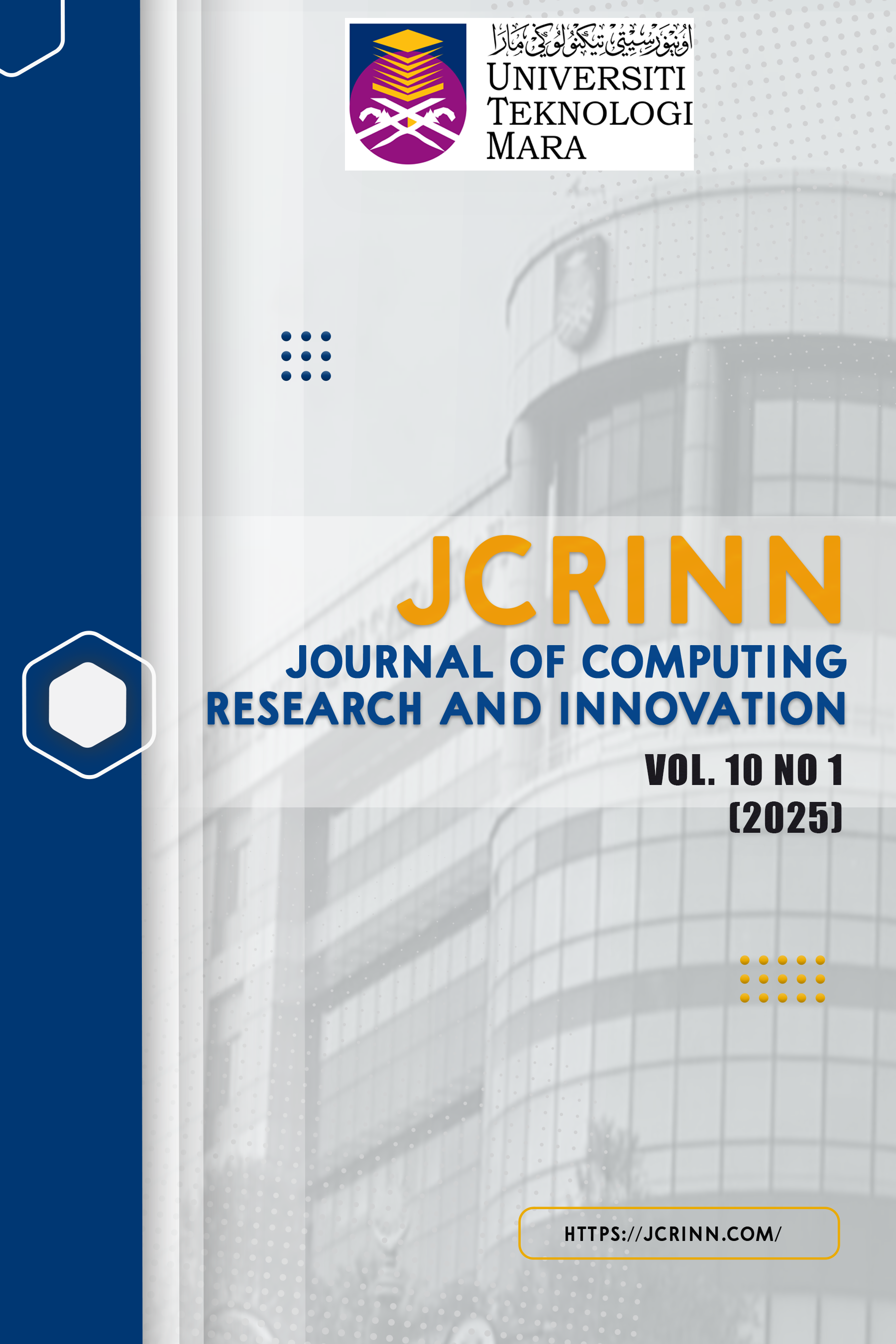Network Directional Distance Function for Measuring Performance of Water Utilities in Malaysia
DOI:
https://doi.org/10.24191/jcrinn.v10i1.512Keywords:
Network Directional Distance Function (NDDF), Water utilities performance, NRW, Non-Revenue Water, Performance IndicatorAbstract
Evaluating the performance of water supply services is crucial in many countries. Performance indicators (PIs) are often used to check how well water management is working. One important PI is the percentage of Non-Revenue Water (NRW), which shows how much water is being lost and how efficiently the utility is using water. Lower NRW percentages reflect better performance. NRW happens while delivering the water supply to the consumer; hence, NRW can be classified as an undesirable output in the water supply process. One type of Data Envelopment Analysis (DEA) model that directly considers the undesirable output factor is the Directional Distance Function (DDF) model. Recently, researchers have expanded the DEA and DDF models into network structures. Since the process of supplying the water services can be expressed as a network process, this study attempts to use the Network Directional Distance Function (NDDF) to measure the water utilities’ performance that incorporates NRW as the undesirable output factor. Additionally, it proposes an alternative performance indicator for benchmarking Malaysian water utilities. The study used 2015-2016 data from the Suruhanjaya Perkhidmatan Air Negara (SPAN) on 14 Malaysian water utility providers. Results show that only Johor and Pulau Pinang were consistently efficient under both DDF and NDDF models. The NDDF model provided clearer efficiency rankings, identifying three efficient states across both years, whereas the DDF model found five in 2015 and seven in 2016. These findings suggest that NDDF enhances performance evaluation and ranking, helping authorities benchmark top-performing utilities for better water service management in Malaysia.
Downloads
References
Alsharif, K., Feroz, E. H., Klemer, A., & Raab, R. (2008). Governance of water supply systems in the Palestinian territories: A data envelopment analysis approach to the management of water resources. Journal of Environmental Management, 87(1), 80-94. https://doi.org/10.1016/j.jenvman.2007.01.002
Anwandter, L., & Ozuna, T. (2002). Can public sector reform improve the efficiency of public water utilities? Environment and Development Economics, 7(4), 687-700. https://doi.org/10.1017/S1355770X02000379
Byrnes, P., Grosskopf, S., & Hayes, K. (1986). Efficiency and ownership: Further evidence. The Review of Economics and Statistics, 68(2), 337-341.
Chambers, R. G., Chung, Y., & Färe, R. (1998). Profit, directional distance functions, and Nerlovian efficiency. Journal of Optimization Theory and Applications, 98(2), 351-364. https://doi.org/10.1023/A:1022637501082
Charnes, A., Cooper, W. W., & Rhodes, E. (1978). Measuring the efficiency of decision making units. European Journal of Operational Research, 2(6), 429-444. https://doi.org/10.1016/0377-2217(78)90138-8
Chung, Y. H., Färe, R., & Grosskopf, S. (1997). Productivity and undesirable outputs: A directional distance function approach. Journal of Environmental Management, 51(3), 229-240. https://doi.org/10.1006/jema.1997.0146
Cook W.D., Liang L. & Zhu J. 2010. Measuring performance of two-stage network structures by DEA: A review and future perspective. Omega, 38(6), 423-430.
Färe R. & Grosskopf S. (1996). Productivity and intermediate products: A frontier approach. Economics Letters, 50(1), 65-70.
Färe, R., & Grosskopf, S. (2000). Theory and application of directional distance functions. Journal of Productivity Analysis, 13(2), 93-103. https://doi.org/10.1023/A:1007864808947
Fukuyama, H., & Weber, W. L. (2010). A slacks-based inefficiency measure for a two-stage system with bad outputs. Omega, 38(5), 398-409. https://doi.org/10.1016/j.omega.2009.12.003
Fukuyama, H., & Weber, W. L. (2014). Two-stage network DEA with bad outputs. In Data Envelopment Analysis (pp. 451-474). Springer, US. https://doi.org/10.1007/978-1-4899-7477-6_18
Garcia-Sanchez, I. (2006). Efficiency measurement in Spanish local government: The case of municipal water services. Review of Policy Research, 23(2), 355-371. https://doi.org/10.1111/j.1541-1338.2006.00205.x
Goh, K. H., & See, K. F. (2023). Incorporating nonrevenue water in the efficiency assessment of water supply utilities: A parametric enhanced hyperbolic distance function. Utilities Policy, 81. https://doi.org/10.1016/j.jup.2022.101483
González-Gómez, F., García-Rubio, M. A., & Jorge Guardiola, G. (2011). Why is non-revenue water so high in so many cities? Water Resources Development, 27(2), 345-360. https://doi.org/10.1080/07900627.2011.555825
Kamarudin, N., Ismail, W. R., & Mohd, M. A. (2015). Malaysian water utilities performance using two-stage DEA. International Journal of Applied Physics and Mathematics, 5(1), 60-66. https://doi.org/10.17706/ijapm.2015.5.1.60-66
Kamarudin, N., & Ismail, W. R. (2016). Establishment of performance indicators for Malaysian water utilities with the presence of undesirable output. Jurnal Teknologi, 78(4-4). https://doi.org/10.11113/jt.v78.8312
Kamarudin, N., Ismail, W. R., & Mohd, M. A. (2018). Network data envelopment analysis as instrument for evaluating water utilities’ performance. Journal of Quality Measurement and Analysis, 14(2), 1-10.
Kamarudin, N., & Ismail, W. R. (2020). Modified Russell network model for determining Malaysia water supply services performance. Journal of Quality Measurement and Analysis, 16(2), 231-241.
Kao, C. (2017). Introduction. In Handbook on Network Data Envelopment Analysis: Foundations and Extensions (pp. 1-17). Springer, Boston, MA. https://doi.org/10.1007/978-1-4614-9568-3_1
Kao, C., & Hwang, S. N. (2008). Efficiency decomposition in two-stage data envelopment analysis: An application to non-life insurance companies in Taiwan. European Journal of Operational Research, 185(1), 418-429. https://doi.org/10.1016/j.ejor.2006.12.044
Kumar, S. (2010). Unaccounted for water and the performance of water utilities: An empirical analysis from India. Water Policy, 12(5), 707-721. https://doi.org/10.2166/wp.2010.012
Lambert, D., Dichev, D., & Raffiee, K. (1993). Ownership and sources of inefficiency in the provision of water services. Water Resources Research, 29(7), 1573-1578. https://doi.org/10.1029/93WR00431
Malaysian Water Industry Guide 2017 (MWIG). (2017). Malaysia Water Association.
Picazo-Tadeo, A. J., Sáez-Fernández, F. J., & González-Gómez, F. (2008). Does service quality matter in measuring the performance of water utilities? Utilities Policy, 16(1), 30-38. https://doi.org/10.1016/j.jup.2007.07.001
Romano, G., & Guerrini, A. (2011). Measuring and comparing the efficiency of water utility companies: A data envelopment analysis approach. Utilities Policy, 19(3), 202-209. https://doi.org/10.1016/j.jup.2011.02.003
Russell, R. R. (1985). Measures of technical efficiency. Journal of Economic Theory, 35(1), 109-126. https://doi.org/10.1016/0022-0531(85)90047-8
See, K. F. (2015). Exploring and analysing sources of technical efficiency in water supply services: Some evidence from Southeast Asian public water utilities. Water Resources and Economics, 9, 23-44. https://doi.org/10.1016/j.wre.2014.11.001
See, K. F., & Ma, Z. (2018). Does non-revenue water affect Malaysia's water services industry productivity? Utilities Policy, 54, 125-131. https://doi.org/10.1016/j.jup.2018.04.006
Downloads
Published
How to Cite
Issue
Section
License
Copyright (c) 2025 Norbaizura Kamarudin, Zuraida Khairudin, Nur Ainina Awang, Nur Rasyida Mohd Rashid (Author)

This work is licensed under a Creative Commons Attribution 4.0 International License.


